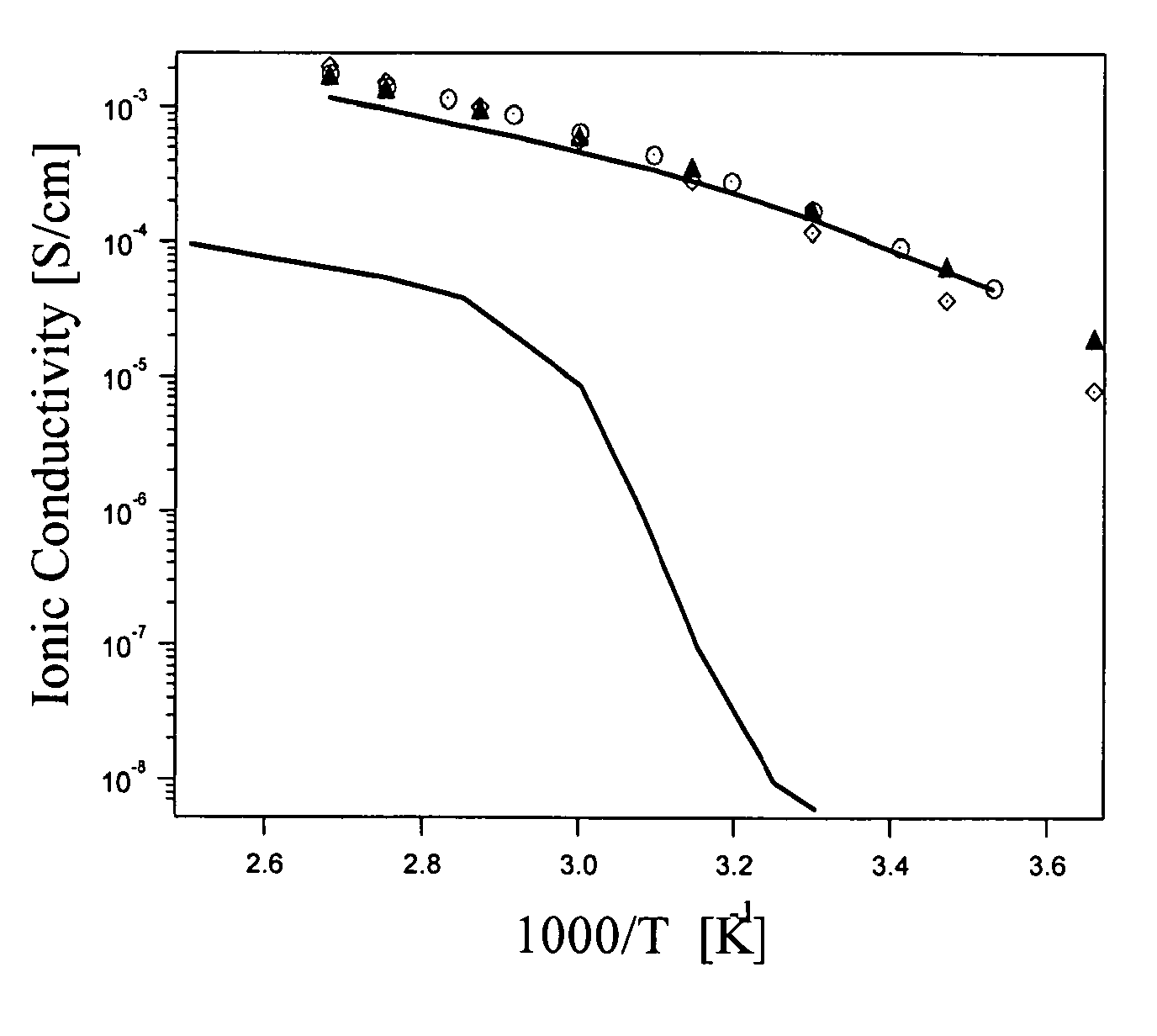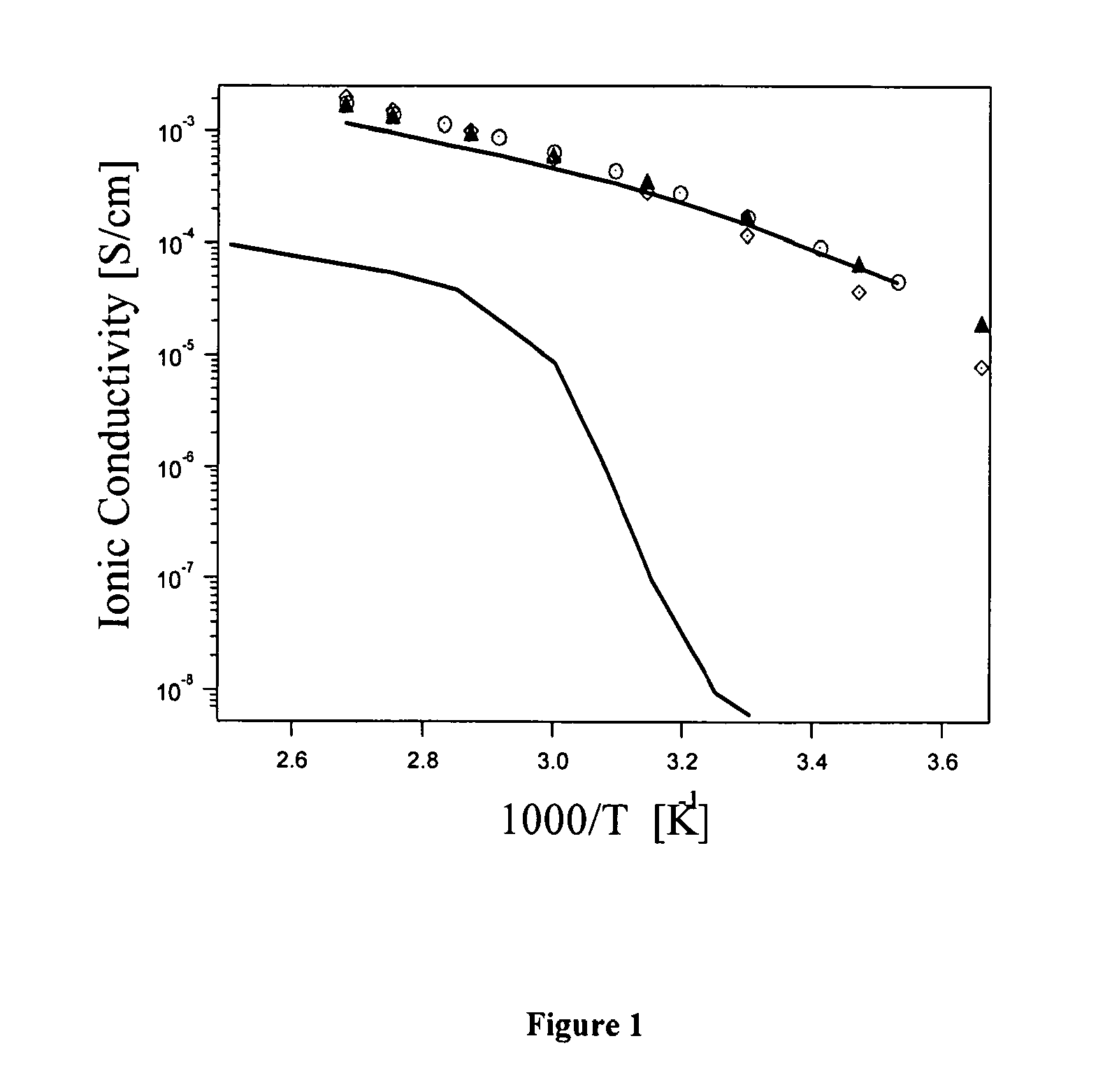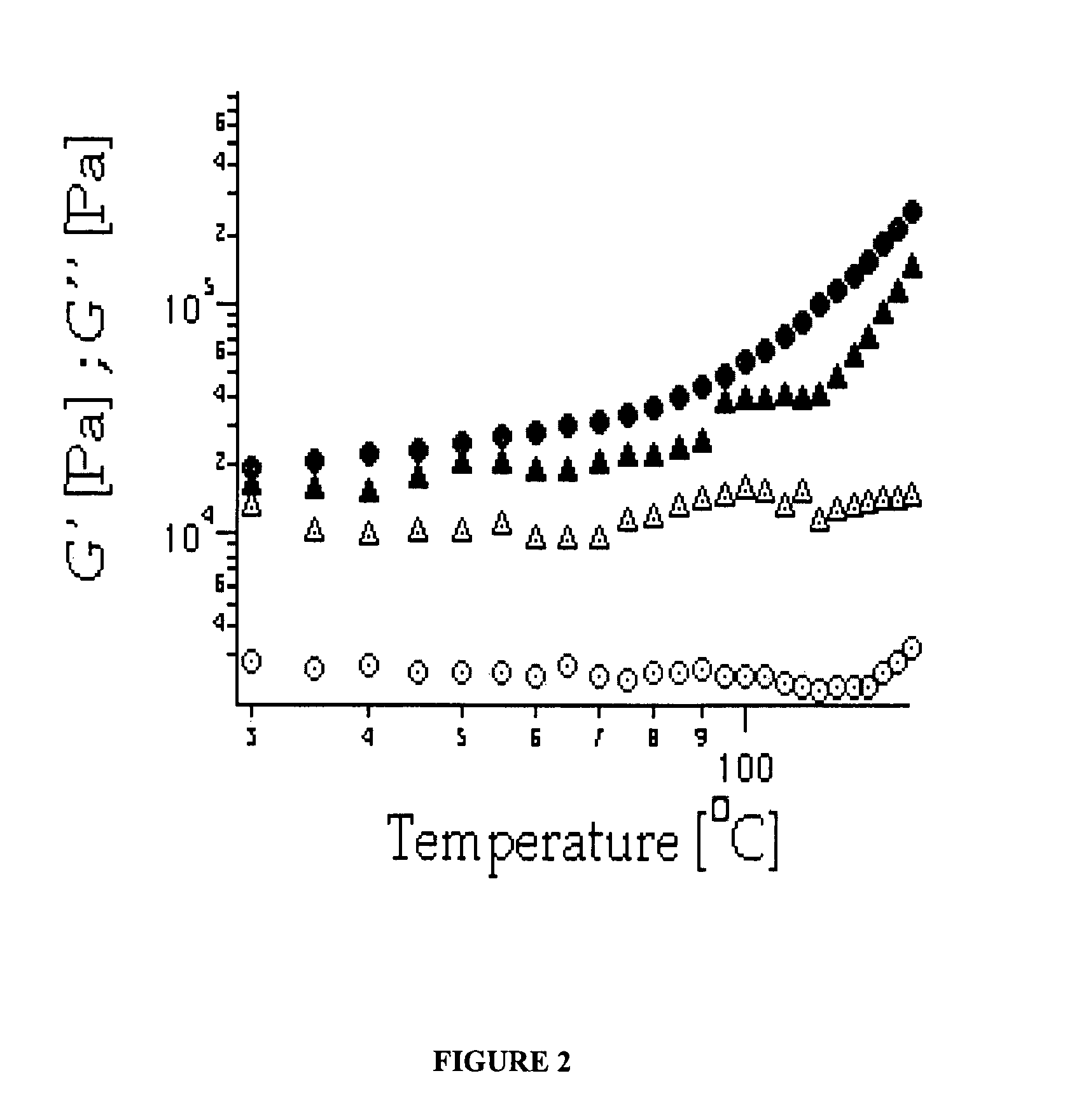Nanoparticle organic hybrid materials (NOHMS)
a hybrid material and nanoparticle technology, applied in the field of nanoparticle organic hybrid materials (nohms), can solve the problems of poor dispersion, miscibility, interfacial strength, etc., and achieve the effect of reducing intermolecular chain entanglemen
- Summary
- Abstract
- Description
- Claims
- Application Information
AI Technical Summary
Benefits of technology
Problems solved by technology
Method used
Image
Examples
example 1
[0100]SiO2—PEG NOHMs are produced by adding 700 ml of reverse osmosis (RO) water to a 1 L glass bottle with magnetic stirrer rotated at high speed>500 rpm; slowly adding a 333 g Ludox AS-30, TM-30, or SM-30 aqueous suspension (i.e. 100 g SiO2) to the water and then stirring; dissolving 100 g PEG-ethoxysilane in 200 ml water; vigorous stirring; continue stirring for 10 hours with intermediate conditions at 12 hours at 110° C.; transferring the resulting material to an evaporating dish (glass); and placing the resulting material and dish in a convection oven at 75° C. until water has evaporated.
[0101]The resultant materials show that as the volume fraction of the SiO2 core particles is decreased from fc≈0.55, to 0.34 to 0.23 the consistency of the nanoparticle organic hybrid materials (NOHMs) changes from a non-flowing gel, to a simple viscous liquid.
example 2
[0102]NOHMs produced using the procedure described in Example 1 are re-suspended in water and any un-tethered corona chains are removed by dialysis. In the dialysis approach, the re-dissolved material is added to the interior of a Spectrum laboratories dialysis bag (5 nm. size cut-off). The end is closed with tubing clamps. The material to be dialyzed is submerged in a 1000 ml bath containing RO water and dialysis allowed to proceed with gentle stirring. For the first 12 hours of dialysis, the water in the bath was refreshed every four hours. For the remaining 12 hours, the water was refreshed once.
[0103]Thermal gravimetric analysis (TGA) was used to characterize the organic content of the materials obtained after the dialysis procedure. Results indicate that approximately 32% of the mass of each hybrid nanoparticle consists of PEG. The PEG has a molecular weight (Mw) of 550 g / mol and an inorganic particle core having a diameter of nm. This implies that there are on average 650 PEG ...
example 3
[0104]Biodegradable NOHMs are produced by adding 700 ml of reverse osmosis (RO) water to a 1 L glass bottle with magnetic stirrer>500 rpm; adding a NaOH base to adjust the pH of the water to 9-10; slowly adding 333 g Ludox AS-30, TM-30, or SM-30 aqueous suspension to the water (i.e. 100 g SiO2) and then stirring to form a solution; dissolving 100 g of PEG-ethoxysilane in 200 ml water to form a mixture; and slowly adding the solution and mixture together with stirring; stirring for 1 hour at 100° C. with intermediate periods of ultrasonification; transferring the material to an evaporating dish (glass); and placing dish and material in a convection oven at 75° C. until water is removed after 12 hours.
[0105]The product of this synthesis is labeled S1.
[0106]The hydroxyl group at the end of the S1-series PEG-based NOHMs provides a route for introducing a host of functionalities to the NOHMs corona—by covalent attachment. We reacted the S1 NOHMs with a 2:1 molar excess (i.e. based on the...
PUM
| Property | Measurement | Unit |
|---|---|---|
| PDI | aaaaa | aaaaa |
| PDI | aaaaa | aaaaa |
| temperatures | aaaaa | aaaaa |
Abstract
Description
Claims
Application Information
 Login to View More
Login to View More - R&D
- Intellectual Property
- Life Sciences
- Materials
- Tech Scout
- Unparalleled Data Quality
- Higher Quality Content
- 60% Fewer Hallucinations
Browse by: Latest US Patents, China's latest patents, Technical Efficacy Thesaurus, Application Domain, Technology Topic, Popular Technical Reports.
© 2025 PatSnap. All rights reserved.Legal|Privacy policy|Modern Slavery Act Transparency Statement|Sitemap|About US| Contact US: help@patsnap.com



